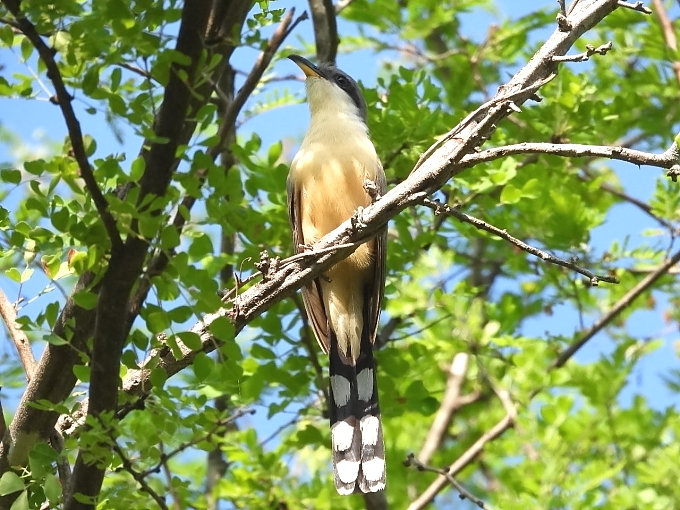
When you have birded a single area as much and for as long as I have birded Michoacán, it becomes progressively harder to find first-time species (“lifers”) there. I achieved five lifers in Michoacán in 2019, four in 2020, three in 2021, and only two in 2022. As you can see, this is not a promising trend.
And indeed, my first six months of the current year had yielded exactly zero lifers for me in Michoacán. I had seen several species turn up in new and unexpected places there, but none of them were birds that I had never seen before. Fortunately, this situation has now changed.
In my last post, I mentioned having gone downhill (1,000 meters, or 3,300 feet) twice recently to the little “Hot Country” town of Paso Ancho. I did this to accomodate visiting Americans who had asked to go birding with me. As it happened, my two most constant Mexican birding buddies were also waiting for the opportunity to go there (blame it on the very special Sinaloa Martin, which is only present there in mid-summer). But they had been unable to accompany us on those first two trips. And so, only a week after visit #2, I made the one-hour drive downhill for yet a third time.
I can’t say I was all that excited about making this third trip. It’s a long, twisty drive. And the town’s dry tropical heat means that you need to arrive early, which, along with Mexico eliminating Daylight Savings Time this year, means you must stumble out of bed at 5 am, and be on the road by 6. (An hour earlier would be even better, but I have my limits.) Plus, dry tropical heat.
Still, I love to bird with Nacho and Jorge, so off we went. It did indeed turn out to be a good outing. At one point it seemed no Martins would be seen, but they eventually turned up. Most of the site’s most charismatic species, such as the Orange-breasted Bunting and Red-breasted Chat, made their appearance. The Golden-crowned Emerald and Plain-capped Starthroat, hummingbirds we had failed to see on the first two visits, made brief appearances.
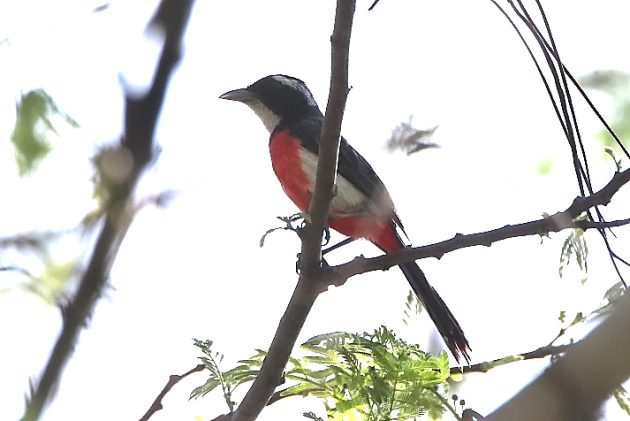
Once again, the Red-breasted Chat.
The area’s endemic Banded Quails allowed us to see them for only a few seconds. I had only heard these birds a week earlier. A Mangrove Cuckoo gave us unexpectedly decent views, with the added perk that Paso Ancho is far inland from where this beautiful bird can supposedly be seen.
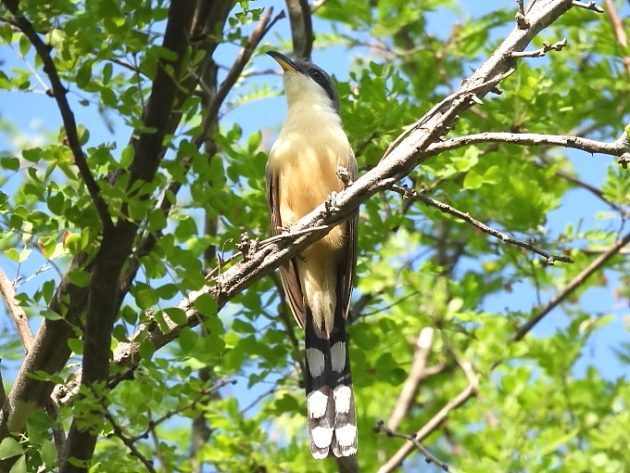
This photo is Nacho’s. Alas, mine were sub-standard.
A group of five spectacular White-throated Magpie-Jays made a raucous appearance. I did not manage any photos this time, so I’ll show one from an earlier encounter in Acapulco. (You may have seen this species on an episode of “The Big-Bang Theory”, in which it is incorrectly identified as a “Blue Jay”. It is, however, a jay that is mostly blue.)
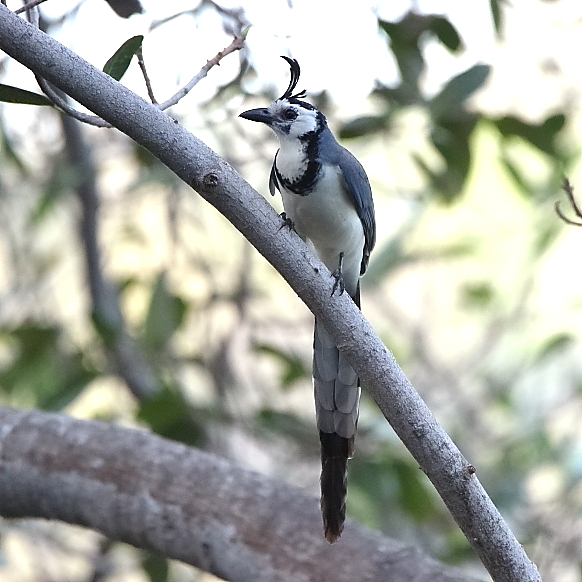
But every outing has its high point. And this one’s was definitely when a bird briefly took wing just to the left of our path, only to settle right back down to the ground. We jostled around, desperately trying to find a decent photographic angle, impeded by barbed wire fencing. Eventually, we settled for taking slightly-acceptable photos through the dense brush. And all the while, the bird just sat there. Clearly, this was a bird whose survival mode is “don’t look at me, I’m not really here”.
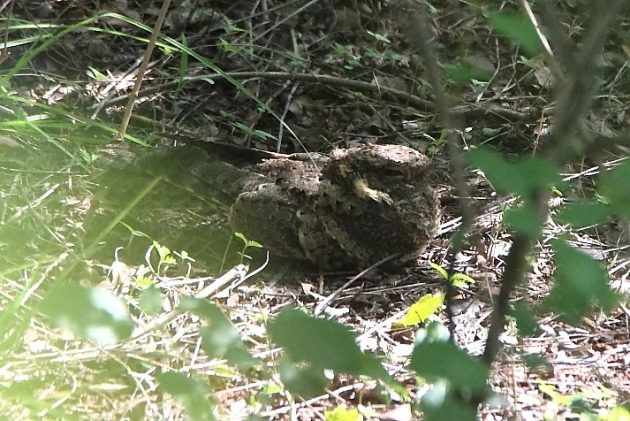
It was also one of those birds which distinguishes itself by not distinguishing itself, with a mixture of different hard-to-define brown tones. Still, we eventually determined that it was a Buff-collared Nightjar. Lifer! (For all three of us, I should add.)
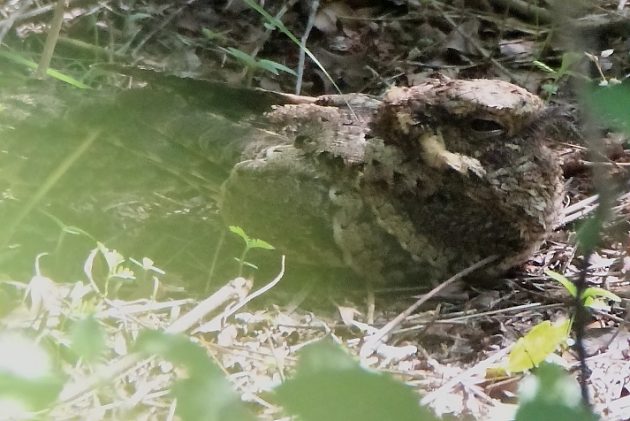
Like all members of the Nightjar family, the Buff-collared Nightjar hunts for insects on the wing, at night, and rests immobile during the day, protected by its subtle camouflage. Like many of them, it usually rests on the ground. Their Latin American common name, Tapacaminos, means “path-blockers”, because they sometimes hide out in plain sight on the open ground of pathways, only to fly away just before they could be stepped on.
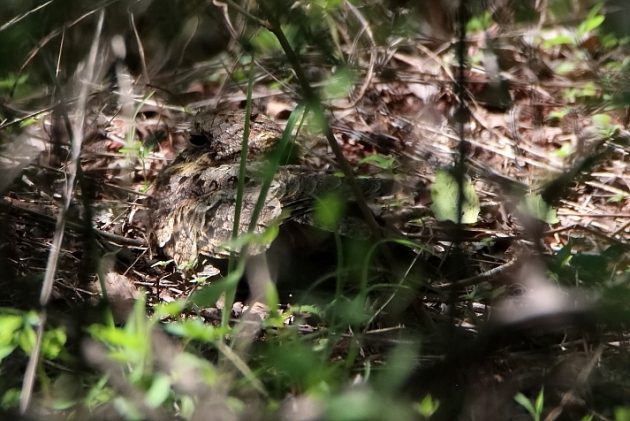
With this sighting, I have now seen four of Michoacán’s six members of the Nightjar family. The remaining two are the Common Pauraque, which can only be seen on the coast here, and the extremely difficult Eared Poorwill, with only 345 sightings and 30 photos listed on EBird. I won’t be holding my breath.
I’ll throw in a few more photos from our trip, just because I can:
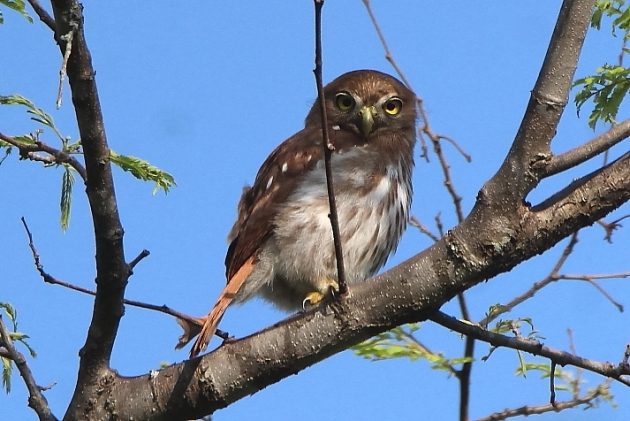
Can’t… stop… showing pictures of cute Ferruginous Pygmy-Owls.
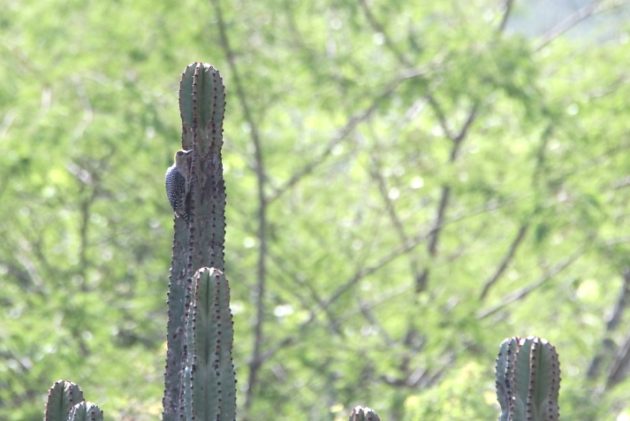
… or Golden-cheeked Woodpeckers.
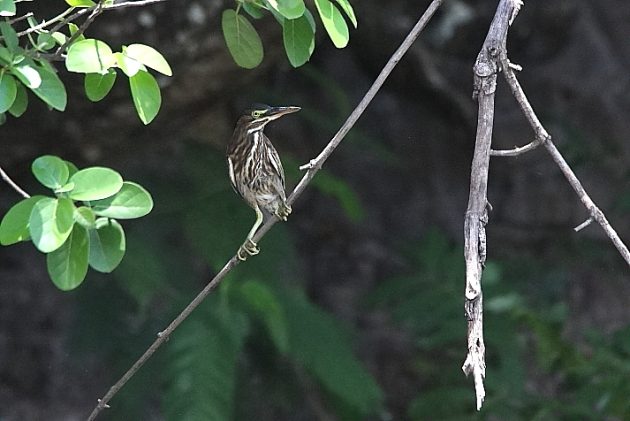
… or Green Herons.
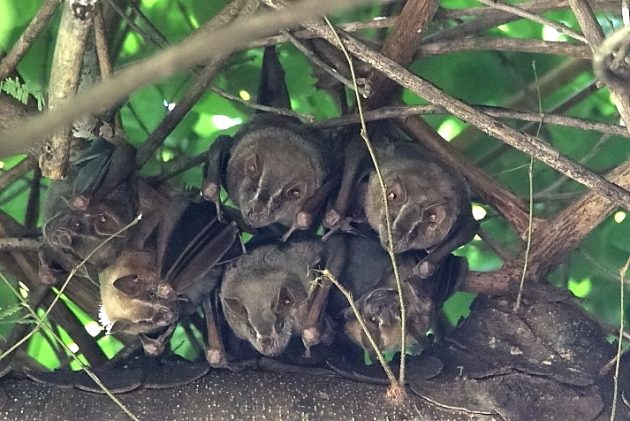
Nacho assured me that these bats are fruit-eaters. That was a relief, since Mexico is home to all three of the world’s vampire bat species. (Also, vampire bats are very small, and these guys were BIG.) As you can see, they were roosting in a tree, not a cave. Straight over our heads, in fact.











Leave a Comment